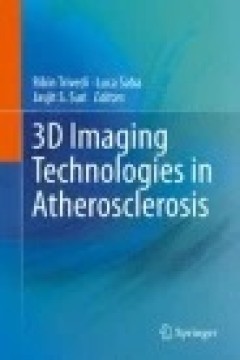Filter by

Environmental Biomedicine
The book presents the latest advances in research into health effects of air pollution, with heavy motor vehicle traffic or cigarette smoke as the exemplar of pollution. The airways are the first-line defense system against pollution. The book focuses on respiratory ailments underlain by inflammation, increased susceptibility to infection, particularly acquired during harsh environmental condit…
- Edition
- -
- ISBN/ISSN
- 978-3-319-14690-4
- Collation
- 20 b/w illustrations, 4 illustrations in colour
- Series Title
- -
- Call Number
- -

Environment Exposure to Pollutants
The impairment of lung function caused by environmental exposure to pollutants and toxicants is a rising health problem, particularly in highly industrialized parts of the world. The problem is urgently calling for the development of new methodologies to assess both the level of elemental exposure and the effects for quality of health and longevity. This volume provides state-of-the-art informa…
- Edition
- -
- ISBN/ISSN
- 978-3-319-10003-6
- Collation
- 10 b/w illustrations, 1 illustrations in colour
- Series Title
- -
- Call Number
- -

Tissue and Organ Regeneration in Adults
This textbook describes the basic principles of induced organ regeneration in skin and peripheral nerves and extends the original successful paradigm to other organs. A set of trans-organ rules is established and its use in regeneration of several organs is illustrated from the works of several independent investigators who worked with a variety of organs, such as the lung, the bladder, and the…
- Edition
- -
- ISBN/ISSN
- 978-1-4939-1865-2
- Collation
- 40 b/w illustrations, 21 illustrations in colour
- Series Title
- -
- Call Number
- -

Tissue Engineering for the Heart
This book covers the fundamentals of tissue engineering for the heart, starting with the basics of organ generation, sensors in tissue and organ fabrication, and the current state-of-the-art in stem cell engineering for the heart. With this foundation in place, the remaining chapters focus on specific aspects of the cardiovascular system, starting with heart muscle, then biological pumps, follo…
- Edition
- -
- ISBN/ISSN
- 978-3-319-41504-8
- Collation
- 97 illustrations in colour
- Series Title
- -
- Call Number
- -

7th WACBE World Congress on Bioengineering 2015: 6th to 8th July, 2015, Singa…
This volume publishes the proceedings of the WACBE World Congress on Bioengineering 2015 (WACBE 2015), which was be held in Singapore, from 6 to 8 July 2015. The World Association for Chinese Biomedical Engineers (WACBE) organizes this World Congress biannually. Our past congresses have brought together many biomedical engineers from over the world to share their experiences and views on the…
- Edition
- -
- ISBN/ISSN
- 978-3-319-19452-3
- Collation
- -
- Series Title
- IFMBE Proceedings
- Call Number
- 610.28 SEV s

6th European Conference of the International Federation for Medical and Biolo…
This volume presents the Proceedings of the 6th European Conference of the International Federation for Medical and Biological Engineering (MBEC2014), held in Dubrovnik September 7 – 11, 2014. The general theme of MBEC 2014 is "Towards new horizons in biomedical engineering" The scientific discussions in these conference proceedings include the following themes: - Biomedical Signal Process…
- Edition
- -
- ISBN/ISSN
- 978-3-319-11128-5
- Collation
- -
- Series Title
- IFMBE Proceedings
- Call Number
- 610.28

5th International Conference on Biomedical Engineering in Vietnam
This volume presents the proceedings of the Fifth International Conference on the Development of Biomedical Engineering in Vietnam which was held from June 16-18, 2014 in Ho Chi Minh City. The volume reflects the progress of Biomedical Engineering and discusses problems and solutions. I aims identifying new challenges, and shaping future directions for research in biomedical engineering fields …
- Edition
- -
- ISBN/ISSN
- 978-3-319-11776-8
- Collation
- -
- Series Title
- IFMBE Proceedings
- Call Number
- 610.28 FIV f

3rd International Conference on Nanotechnologies and Biomedical Engineering: …
This volume presents the proceedings of the 3rd International Conference on Nanotechnologies and Biomedical Engineering which was held on September 23-26, 2015 in Chisinau, Republic of Moldova. ICNBME-2015 continues the series of International Conferences in the field of nanotechnologies and biomedical engineering. It aims at bringing together scientists and engineers dealing with fundamenta…
- Edition
- -
- ISBN/ISSN
- 978-981-287-736-9
- Collation
- -
- Series Title
- IFMBE Proceedings
- Call Number
- 610.28 INT i

3D Imaging Technologies in Atherosclerosis
Atherosclerosis represents the leading cause of mortality and morbidity in the world. Two of the most common, severe, diseases that may occur, acute myocardial infarction and stroke, have their pathogenesis in the atherosclerosis that may affect the coronary arteries as well as the carotid/intra-cranial vessels. Therefore, in the past there was an extensive research in identifying pre-clinical …
- Edition
- -
- ISBN/ISSN
- 978-1-4899-7618-5
- Collation
- -
- Series Title
- -
- Call Number
- 612 THR t

1st World Congress on Electroporation and Pulsed Electric Fields in Biology, …
This volume presents the proceedings of the 1st World Congress on Electroporation and Pulsed Electric Fields in Biology, Medicine and Food & Environmental Technologies (WC2015). The congress took place in Portorož, Slovenia, during the week of September 6th to 10th, 2015. The scientific part of the Congress covered different aspects of electroporation and related technologies and included the …
- Edition
- -
- ISBN/ISSN
- 978-981-287-817-5
- Collation
- -
- Series Title
- IFMBE Proceedings
- Call Number
- 610.28 WOR w
 Computer Science, Information & General Works
Computer Science, Information & General Works  Philosophy & Psychology
Philosophy & Psychology  Religion
Religion  Social Sciences
Social Sciences  Language
Language  Pure Science
Pure Science  Applied Sciences
Applied Sciences  Art & Recreation
Art & Recreation  Literature
Literature  History & Geography
History & Geography